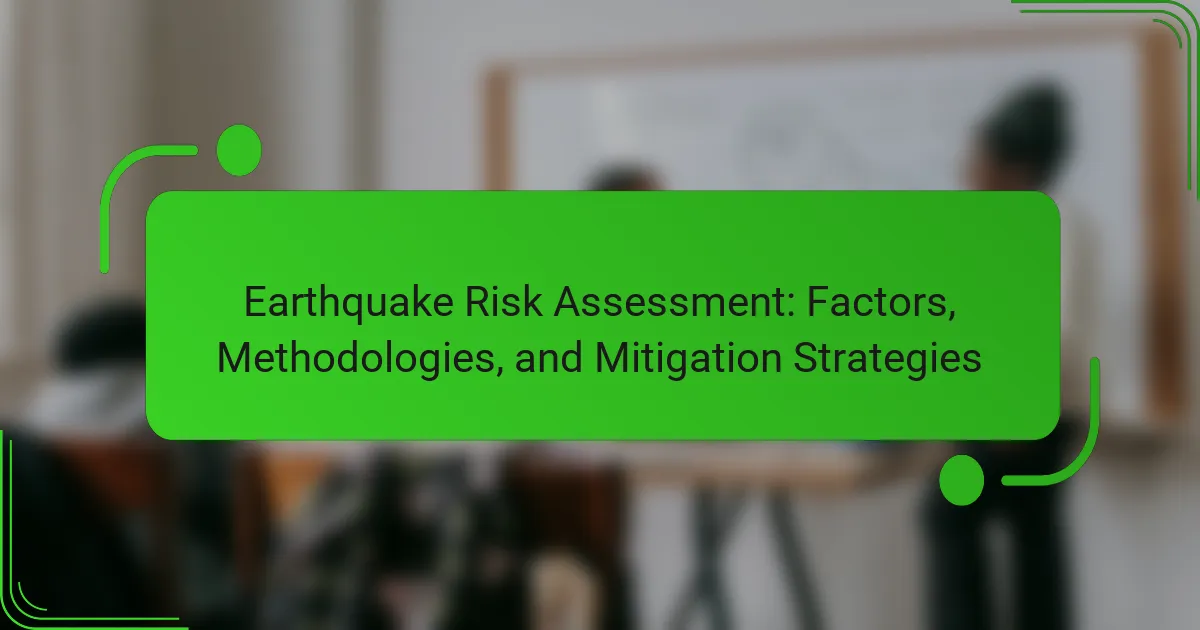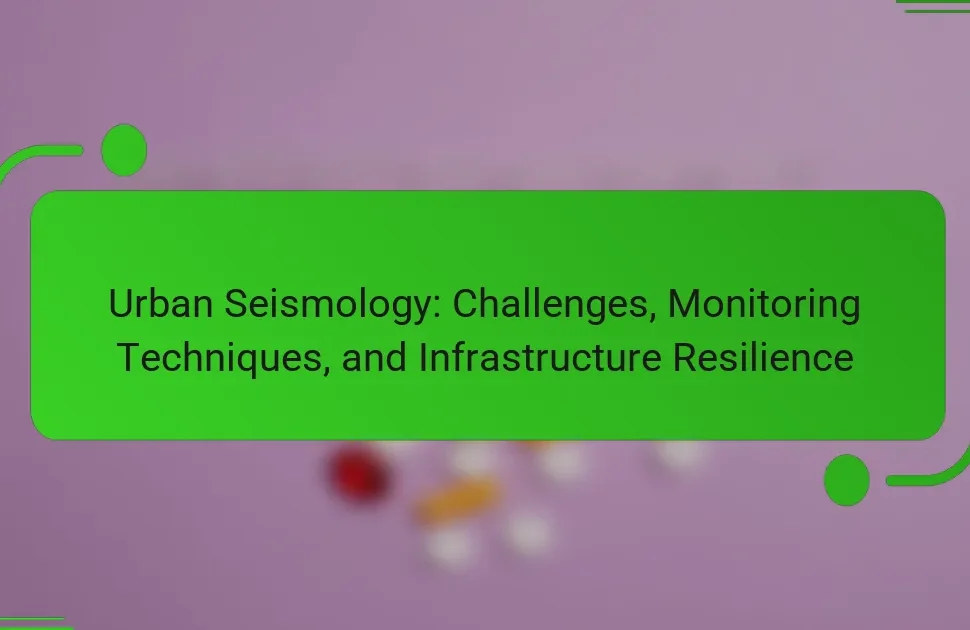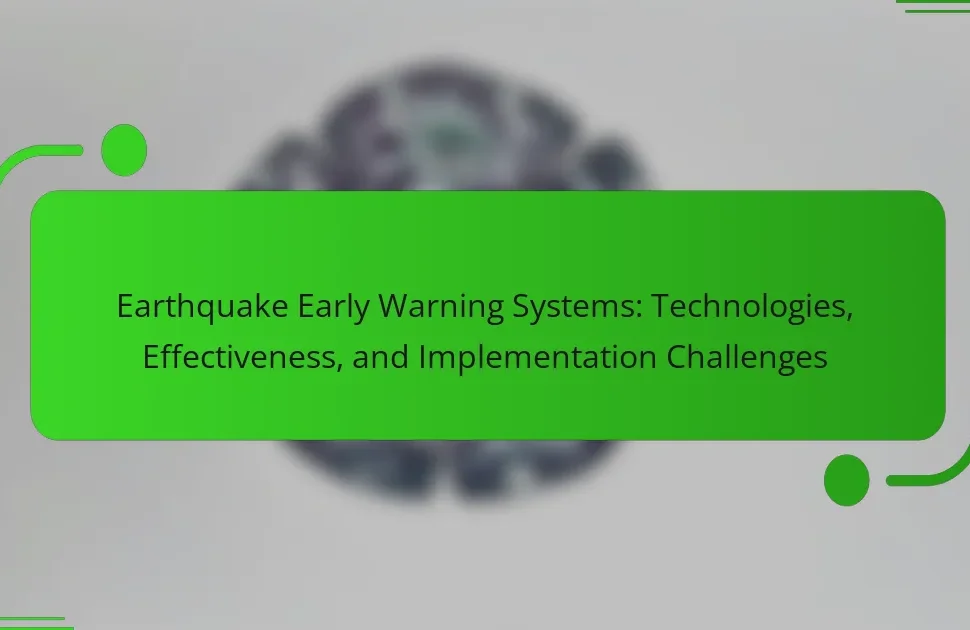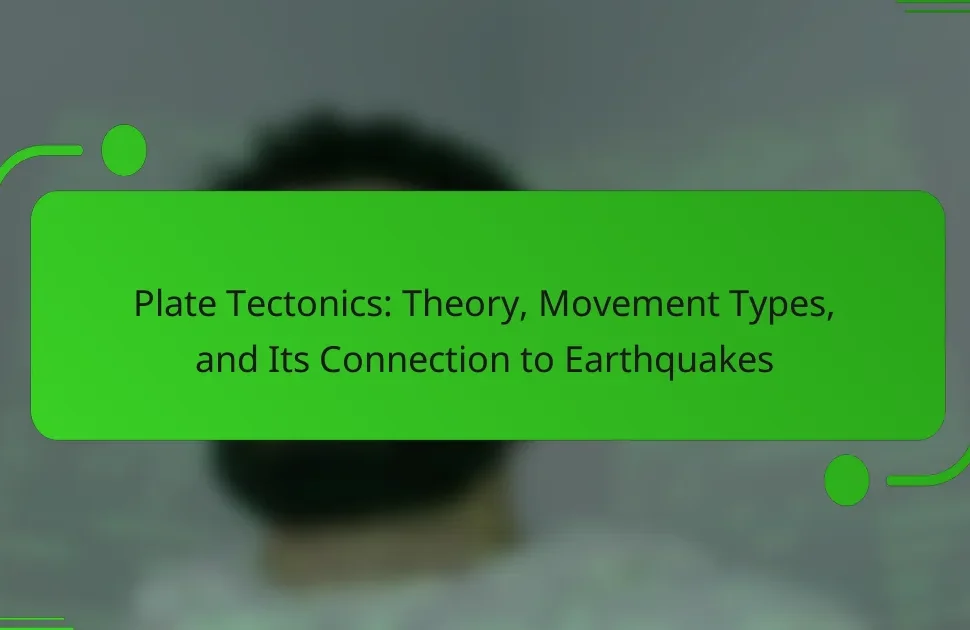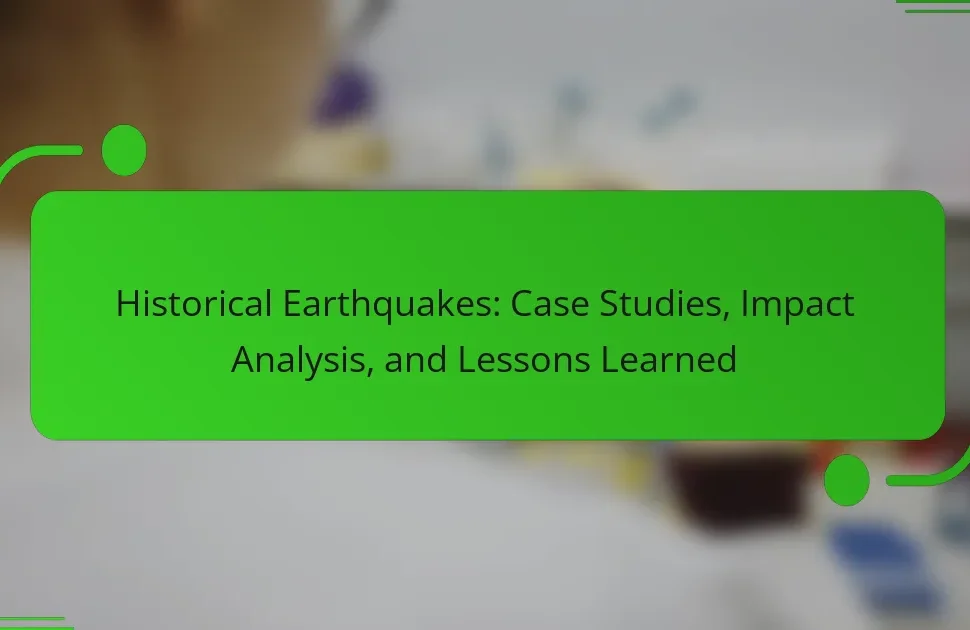Earthquake risk assessment evaluates the potential impacts of earthquakes on specific areas or structures, focusing on identifying vulnerabilities and estimating the likelihood of various earthquake scenarios. This process utilizes historical data, geological studies, and engineering analyses to inform decision-making related to disaster preparedness and mitigation strategies. The article explores the factors influencing earthquake risk assessments, the methodologies employed in these evaluations, and effective mitigation strategies to minimize damage, highlighting the importance of comprehensive assessments in areas prone to seismic activity, as emphasized by studies from organizations like the United States Geological Survey (USGS).
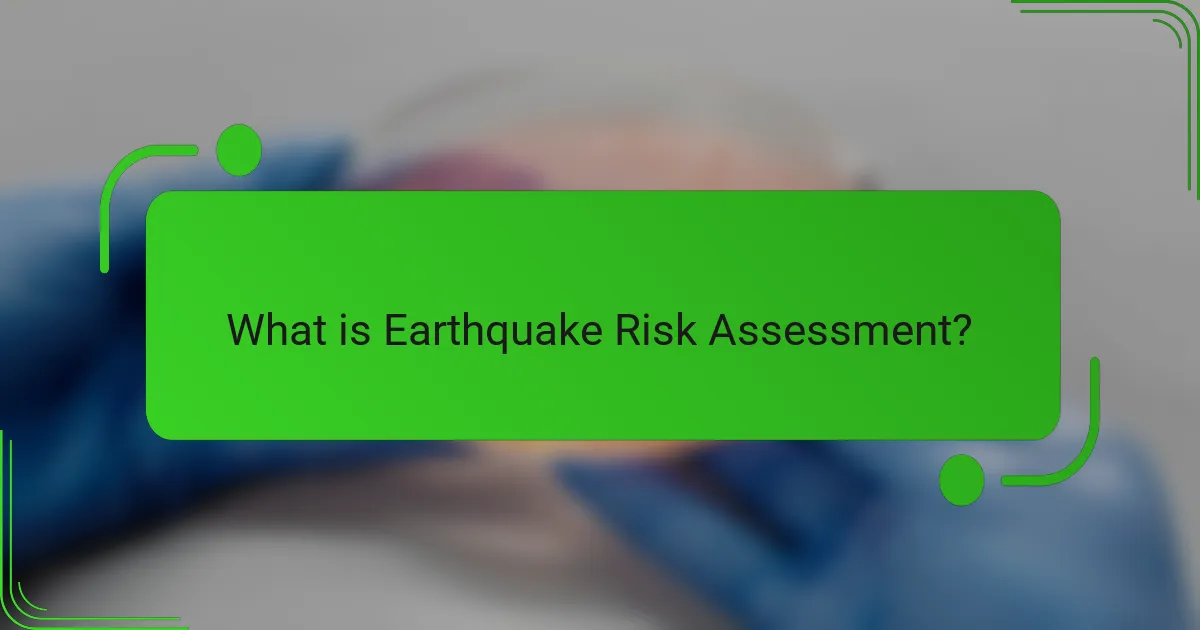
What is Earthquake Risk Assessment?
Earthquake risk assessment is the process of evaluating the potential impacts of earthquakes on a specific area or structure. It involves identifying vulnerabilities and estimating the likelihood of different earthquake scenarios. This assessment uses historical data, geological studies, and engineering analyses. The goal is to inform decision-making for disaster preparedness and mitigation strategies. For example, a study by the United States Geological Survey (USGS) indicates that areas prone to seismic activity require comprehensive risk assessments to minimize damage.
How is earthquake risk defined and measured?
Earthquake risk is defined as the potential for damage and loss caused by seismic events. It is measured through a combination of hazard assessment, vulnerability analysis, and exposure evaluation. Hazard assessment quantifies the likelihood and intensity of earthquakes in a specific area. Vulnerability analysis evaluates the susceptibility of buildings and infrastructure to seismic forces. Exposure assessment identifies the assets and populations at risk in earthquake-prone regions. The risk is often expressed in terms of expected losses over time, such as financial costs or casualties. Historical data and statistical models are commonly used to inform these assessments. For instance, the United States Geological Survey (USGS) provides seismic hazard maps that illustrate earthquake risk across different regions.
What are the key factors influencing earthquake risk?
Key factors influencing earthquake risk include geological, environmental, and human factors. Geological factors involve the location of fault lines and tectonic plate boundaries. Areas near major fault lines, like the San Andreas Fault, experience higher risks. Environmental factors include soil composition and land use. Soft soil can amplify seismic waves, increasing potential damage. Human factors involve urbanization and infrastructure quality. Densely populated regions with poor building standards face greater risks during earthquakes. Historical data indicates that regions with these characteristics have experienced more frequent and severe earthquakes.
How do geographic and geological features impact risk assessment?
Geographic and geological features significantly impact risk assessment by influencing the likelihood and severity of earthquakes. The proximity to tectonic plate boundaries increases the risk of seismic activity. Regions with soft soil may amplify seismic waves, leading to greater damage during an earthquake. Conversely, areas with solid bedrock typically experience less shaking. Historical data shows that cities built on fault lines, like San Francisco, face higher risks. Additionally, geographic features such as mountains can affect local ground shaking patterns. Understanding these features allows for more accurate risk modeling and preparedness strategies.
Why is earthquake risk assessment important?
Earthquake risk assessment is important because it helps identify potential hazards and vulnerabilities. Understanding these risks enables better preparedness and response strategies. Accurate assessments can minimize damage to infrastructure and loss of life. For instance, studies show that regions with comprehensive risk assessments have reduced fatalities during seismic events. Communities can prioritize resources and develop effective emergency plans based on assessment findings. Moreover, insurance companies use risk assessments to determine policy rates and coverage options. Overall, effective earthquake risk assessment is crucial for enhancing public safety and resilience.
How does it contribute to public safety and infrastructure resilience?
Earthquake risk assessment contributes to public safety and infrastructure resilience by identifying vulnerabilities in structures and communities. It enables planners to implement effective mitigation strategies. These strategies can include retrofitting buildings and improving emergency response plans. Research indicates that regions with comprehensive risk assessments experience fewer casualties during earthquakes. For example, the 1994 Northridge earthquake prompted enhanced building codes in California. These codes significantly improved the resilience of structures against seismic events. Consequently, effective risk assessment leads to better preparedness and reduced economic losses.
What role does it play in urban planning and development?
Earthquake risk assessment plays a critical role in urban planning and development. It informs the design and construction of buildings to withstand seismic events. This assessment helps identify vulnerable areas and prioritize infrastructure improvements. By integrating risk assessment into planning, cities can enhance public safety. Policies can be developed to enforce building codes that mitigate earthquake damage. Historical data on past earthquakes guides future planning decisions. Effective risk assessment can reduce economic losses and protect lives during seismic events.
What methodologies are used in earthquake risk assessment?
Earthquake risk assessment methodologies include probabilistic seismic hazard assessment and deterministic seismic hazard assessment. Probabilistic seismic hazard assessment evaluates the likelihood of earthquake ground shaking at specific locations over time. It incorporates historical seismicity, geological conditions, and fault behavior. This method typically uses statistical models to estimate the probability of various levels of ground shaking.
Deterministic seismic hazard assessment focuses on specific earthquake scenarios. It estimates ground shaking based on the characteristics of known faults and the maximum expected earthquake magnitude. This method often uses ground motion prediction equations to calculate potential impacts.
Other methodologies include vulnerability assessment, which evaluates the resilience of structures to seismic events. It involves analyzing building types, construction practices, and occupancy. Additionally, risk assessment can incorporate socio-economic factors, assessing the potential impact on communities.
These methodologies are widely recognized in the field of earthquake engineering and disaster risk reduction. They provide essential frameworks for understanding and mitigating earthquake risks effectively.
What are the common models and tools employed in the assessment process?
Common models and tools in the earthquake risk assessment process include probabilistic seismic hazard assessment (PSHA), deterministic seismic hazard assessment (DSHA), and risk assessment software tools. PSHA estimates the likelihood of earthquake ground shaking based on historical data and seismic sources. DSHA evaluates potential ground shaking from specific earthquake scenarios. Risk assessment software, such as HAZUS, models the impact of earthquakes on buildings and infrastructure. These models and tools help in understanding earthquake risks and informing mitigation strategies.
How do qualitative and quantitative approaches differ in assessing risk?
Qualitative and quantitative approaches differ in assessing risk through their methods and data types. Qualitative approaches rely on subjective assessments and descriptive data. They often involve expert opinions, interviews, and focus groups. This method captures complex factors that numbers may overlook.
In contrast, quantitative approaches use numerical data and statistical analysis. They involve measurable variables, such as historical earthquake frequencies and magnitudes. This method provides objective results that can be statistically validated.
For example, qualitative risk assessments may identify community concerns about earthquake preparedness. Quantitative assessments might calculate the probability of seismic events based on historical data. Both approaches complement each other but serve different purposes in risk assessment.
What factors should be considered in earthquake risk assessment?
Key factors in earthquake risk assessment include seismic hazard, building vulnerability, and population exposure. Seismic hazard refers to the likelihood and intensity of earthquakes in a specific area. Building vulnerability assesses the structural integrity and resilience of constructions against seismic forces. Population exposure evaluates the number of people and critical infrastructure in potential earthquake zones. Historical earthquake data provides insights into past events and their impacts. Geological conditions, such as soil type and fault lines, influence ground shaking and potential damage. Emergency preparedness and response plans are essential for minimizing risk and enhancing community resilience. These factors collectively inform effective risk management strategies.
How do historical data and seismic activity inform risk evaluations?
Historical data and seismic activity are crucial for informing risk evaluations. They provide insights into past earthquake occurrences and their impacts. Historical data includes records of magnitude, frequency, and locations of previous earthquakes. This data helps identify patterns and trends over time. Seismic activity monitoring offers real-time data on current tectonic movements. Analyzing both historical and seismic data allows for the assessment of potential future risks. For instance, regions with a history of frequent seismic events are often classified as high-risk zones. Studies show that areas with significant historical seismicity have a higher likelihood of future earthquakes. This information is vital for urban planning and disaster preparedness strategies.
What role do building codes and land use play in risk assessment?
Building codes and land use regulations are critical components of risk assessment for earthquakes. They establish standards for construction that enhance structural integrity. Effective building codes can minimize damage during seismic events. Land use planning helps avoid construction in high-risk areas prone to earthquakes.
For example, areas with a history of seismic activity may have stricter building regulations. This ensures that structures can withstand potential earthquakes. In contrast, lenient codes in vulnerable zones can increase risk. A study by the Federal Emergency Management Agency (FEMA) shows that adherence to building codes reduces earthquake-related losses significantly.
Thus, building codes and land use directly influence the safety and resilience of communities facing earthquake risks.
How can earthquake risks be mitigated?
Earthquake risks can be mitigated through various strategies. Structural reinforcement of buildings is essential to withstand seismic forces. Implementing strict building codes ensures that new constructions meet safety standards. Retrofitting older structures improves their resilience against earthquakes. Community preparedness programs educate the public on emergency response. Early warning systems provide alerts seconds before shaking begins, allowing people to take cover. Land-use planning avoids construction in high-risk areas, reducing exposure. Regular seismic assessments identify vulnerabilities in infrastructure. These measures collectively enhance safety and reduce potential damage during an earthquake.
What strategies are effective in reducing vulnerability to earthquakes?
Effective strategies for reducing vulnerability to earthquakes include implementing building codes, retrofitting structures, and enhancing community preparedness. Building codes ensure that new constructions can withstand seismic forces. Retrofitting older buildings improves their structural integrity against earthquakes. Community preparedness involves educating residents on emergency response plans and conducting drills. Research indicates that regions with strict building codes experience fewer damages during earthquakes. For example, Japan’s building regulations significantly reduced casualties during the 2011 earthquake. Furthermore, studies show that communities with regular preparedness training have quicker recovery times. These strategies collectively enhance resilience to seismic events.
How can community preparedness and response plans enhance resilience?
Community preparedness and response plans enhance resilience by establishing organized frameworks for disaster management. These plans outline specific roles and responsibilities for community members during an emergency. They facilitate effective communication among stakeholders, ensuring timely information dissemination. Preparedness training equips individuals with skills to respond effectively to earthquakes. Regular drills and simulations strengthen community readiness and response capabilities. Research indicates that communities with established plans experience reduced recovery times after disasters. For example, the Federal Emergency Management Agency (FEMA) highlights that effective planning can lead to a 30% decrease in post-disaster recovery costs. Overall, these plans foster a culture of preparedness, enabling communities to withstand and recover from seismic events.
What are the challenges in earthquake risk assessment and mitigation?
The challenges in earthquake risk assessment and mitigation include data limitations, uncertainty in predictions, and resource constraints. Data limitations arise from insufficient historical records and inadequate geological surveys. Uncertainty in predictions stems from the complex nature of seismic activity and the difficulty in modeling potential earthquake scenarios. Resource constraints often hinder the implementation of effective mitigation strategies, including funding and technical expertise. Additionally, public awareness and preparedness can be low, reducing community resilience. These challenges complicate the development of comprehensive risk assessment frameworks and effective mitigation plans.
How do uncertainties and limitations affect risk evaluations?
Uncertainties and limitations significantly impact risk evaluations by introducing variability in the assessment outcomes. These factors can lead to inaccurate predictions regarding potential earthquake impacts. For instance, uncertainties in geological data can result in misestimating the likelihood of seismic events. Limitations in modeling techniques may restrict the ability to account for all possible scenarios. Consequently, risk evaluations may underestimate the actual risk, affecting preparedness and response strategies. Research indicates that effective risk management requires acknowledging these uncertainties to improve decision-making processes. A study by the National Research Council highlights the importance of incorporating uncertainty in seismic hazard assessments to enhance their reliability.
What are the implications of climate change on earthquake risk assessments?
Climate change impacts earthquake risk assessments by altering geological conditions. Increased rainfall and flooding can lead to soil saturation. This saturation may increase landslide risks in seismically active areas. Additionally, climate change can affect the stability of fault lines. For instance, rising temperatures can lead to thermal expansion of rocks. This expansion can influence stress distributions along faults. Studies indicate that changes in land use due to climate adaptation may also affect seismic activity. Thus, integrating climate change factors into earthquake risk assessments is essential for accuracy.
What best practices should be followed in earthquake risk assessment?
Best practices in earthquake risk assessment include thorough data collection and analysis. This involves gathering historical seismic data and understanding local geology. Engaging with community stakeholders is essential for accurate risk perception. Utilizing advanced modeling techniques enhances predictive capabilities. Regularly updating risk assessments ensures they reflect current conditions. Training personnel in risk assessment methodologies is vital for consistency. Implementing mitigation strategies based on assessment findings reduces potential impacts. According to the United Nations, integrating risk assessment into urban planning is crucial for resilience.
How can continuous monitoring improve risk assessment accuracy?
Continuous monitoring enhances risk assessment accuracy by providing real-time data on seismic activities. This data allows for timely updates to risk models. Accurate models reflect current conditions more effectively than static assessments. Continuous monitoring captures changes in geological and environmental factors that influence earthquake risks. For instance, real-time GPS and seismic sensors track ground movement and fault activity. Research shows that regions with continuous monitoring have improved prediction capabilities. A study by the United States Geological Survey (USGS) indicates that real-time data can reduce uncertainty in hazard assessments. Thus, continuous monitoring is vital for precise earthquake risk evaluations.
What role does public education and awareness play in risk mitigation?
Public education and awareness significantly enhance risk mitigation during earthquakes. By informing communities about earthquake hazards, preparedness strategies, and response protocols, education empowers individuals to take proactive measures. Studies show that regions with robust public education programs experience lower casualties and property damage during seismic events. For instance, the Federal Emergency Management Agency (FEMA) reports that communities engaged in preparedness training save lives and reduce economic losses. Additionally, awareness campaigns can increase participation in drills and emergency planning, fostering a culture of safety. Overall, public education serves as a critical tool in minimizing the impact of earthquakes on society.
Earthquake risk assessment is the systematic evaluation of potential earthquake impacts on specific areas or structures, identifying vulnerabilities and estimating the likelihood of various seismic scenarios. This article covers the definition and measurement of earthquake risk, key influencing factors, methodologies used in assessments, and the role of building codes and land use in mitigating risks. It also highlights the importance of community preparedness, continuous monitoring, and public education in enhancing resilience against seismic events. Additionally, the article addresses challenges in risk assessment and the implications of climate change on earthquake risk evaluations.
